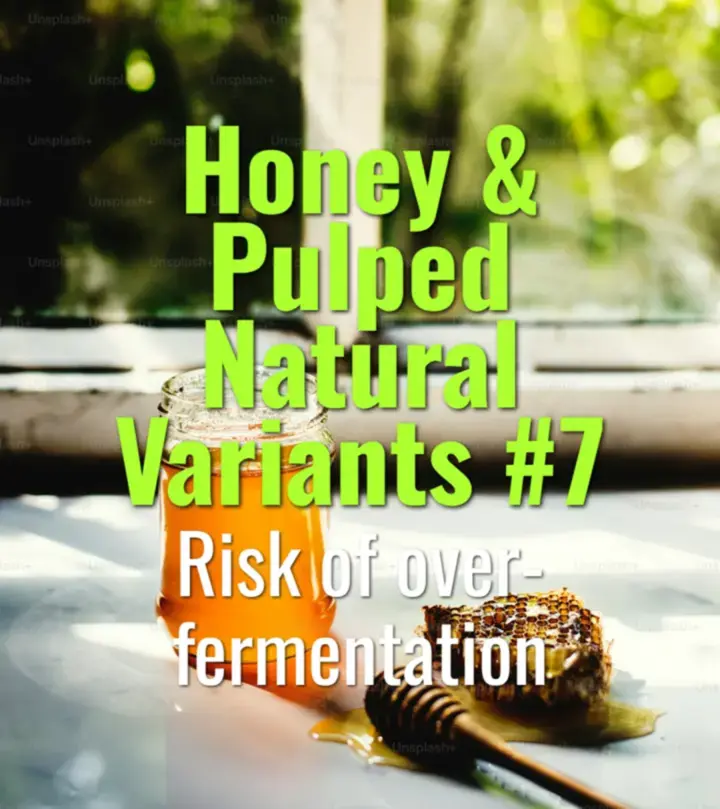Risk of over-fermentation
This topic explains why honey and pulped natural processes carry risks of over-fermentation, the conditions that cause it, and how producers manage these risks to protect cup quality.
- Coffee Basics Nerds
- 2 min read
Article 7 of 12 in Honey & Pulped Natural Variants/

Why Honey Processes Are Vulnerable
- Unlike washed coffees, honey and pulped naturals retain varying amounts of mucilage on beans during drying.
- Mucilage is sugar-rich and sticky, providing fuel for microbial activity.
- If drying is too slow or uneven, microbes continue fermenting beyond desirable levels.
Causes of Over-Fermentation
- Excess mucilage: Red and black honeys retain up to 100% mucilage, highest risk.
- Slow drying: Humid or rainy climates prolong moisture retention.
- Thick drying layers: Beans clump together, trapping heat and moisture.
- Poor airflow: Insufficient ventilation increases microbial activity.
- Infrequent turning: Creates hotspots for fermentation.
Signs of Over-Fermentation
- Visual: Beans darken excessively, sticky texture persists too long.
- Sensory: Sour, vinegary, or alcoholic notes; sometimes musty or phenolic.
- Storage: Increased instability and mold risk.
Cup Impacts
- Clean fruitiness replaced by sour or off flavors.
- Reduced acidity clarity and sweetness.
- Specialty-grade lots downgraded or rejected.
Prevention Strategies
- Layer control: Keep beds 2–4 cm thick depending on honey type.
- Turning frequency: Every 30–60 minutes for red/black honey during early stages.
- Airflow: Use raised beds, solar dryers, or ventilated tunnels.
- Moisture monitoring: Track with meters; target 10–12%.
- Weather protection: Cover or move beans during rain or high humidity.
Relative Risk by Honey Type
- White/Yellow: Low risk, fast drying, minimal mucilage.
- Red: Moderate to high risk, requires attentive management.
- Black: Highest risk; labor- and infrastructure-intensive to manage safely.
Lasting Importance
Over-fermentation risk in honey processing highlights the delicate balance between innovation and control. By carefully managing drying conditions, producers preserve the desired sweetness, fruitiness, and body without tipping into sour, defective profiles that undermine specialty quality.
You might also like:
- Tags:
- Lasting Importance
- Specialty Grade
- Raised Beds
- Microbial Activity
- Red Black
- Solar Dryers
- Black Honey
- Clarity Sweetness
- White Yellow
- High Humidity
- Honey Processing
- Turning Frequency
- Honey Processes
- Slow Drying
- Humid Rainy
- Honey Pulped
- Washed Coffees
- Mold Risk
- Drying Conditions
- Rainy Climates
- Prevention Strategies
- Grade Lots
- Flavors Reduced
- Musty Phenolic
- Beds Solar